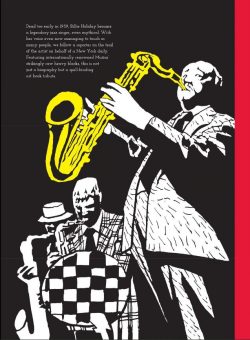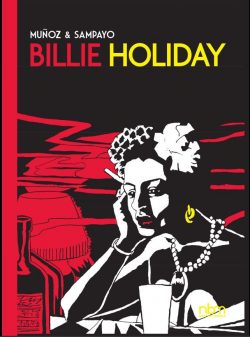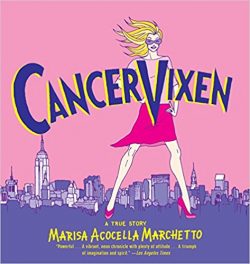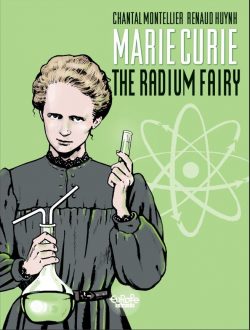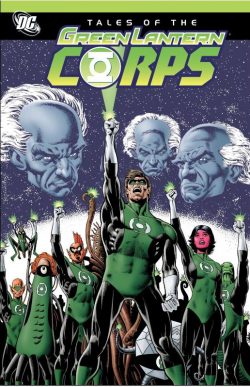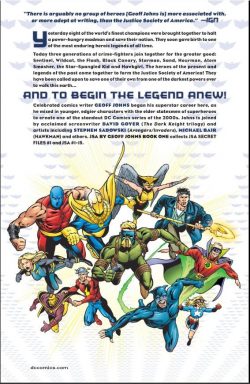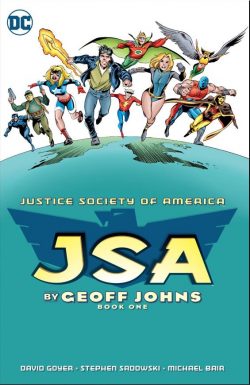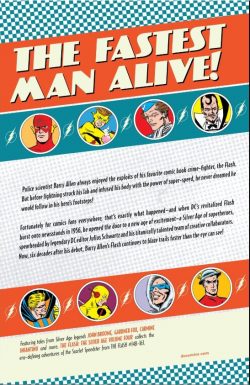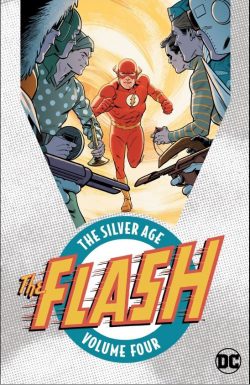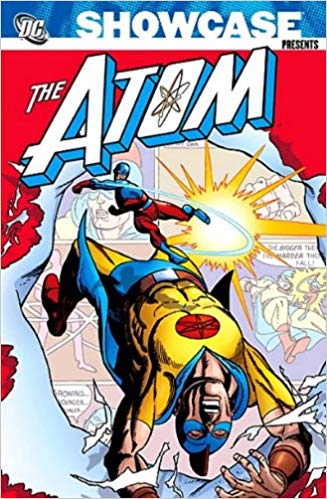
By Gardner Fox, Frank Robbins, Gil Kane, Mike Sekowsky & various (DC Comics)
ISBN: 978-1-4012-1848-5 (TPB)
There’s a glorious wealth of classic comics superhero material available for fans these days, but whether in archival volumes or digital editions, an inexplicable amount of classy material still languishes all unappreciated in limbo. One of the most cutting of omissions is the subject of today’s re-review: a veteran champion with an immaculate pedigree, a TV presence and sublime creative teams, who won’t win any new fans unless and until he gets his own revived archival editions. Until then, however…
Super-Editor Julius Schwartz famously ushered in the Silver Age of American Comics with his Showcase successes Flash, Adam Strange and Green Lantern, directly leading to the Justice League of America which in turn inspired Fantastic Four and the whole Marvel Empire and…
However, his fourth attempt to revitalize a “Golden Age Great†stalled when Hawkman (debuting in Brave and the Bold #34, February-March 1961) failed to find an immediate audience. Undeterred, Schwartz back-pedalled and resolutely persevered with the Winged Wonder, whilst moving forward with his next revival. Showcase #34 (September-October 1961) offered a space age reimagining of the pint-sized strongman of the 1940’s Justice Society of America: transformed into a fascinating super-science champion and seemingly eternal underdog by design.
Ray Palmer was a young physicist working on the compression of matter: a teaching Professor at Ivy Town University. He was wooing career girl Jean Loring, who wanted to make her name as a trial lawyer before settling down as Mrs. Palmer (yep, that’s what the 1960s were like for the fillies; years of striving and achievement followed by glorious, fulfilling days cooking meatloaf, changing nappies and gracefully dodging the more hands-on and persistent male neighbours…)
One evening Ray discovered an ultra-dense fragment of White Dwarf Star Matter, leading his research into a new direction. By converting some of that degenerate matter into a lens he could shrink objects, but frustratingly they always exploded when he attempted to restore them to their original state.
As fiercely competitive as his intended bride, Ray kept his progress secret until he could perfect the process. In the meantime, the couple took a group of youngsters on a science hike to Giant Caverns, where a cave-in trapped the entire party.
As they all lay entombed and dying, Ray secretly activated his reducing lens to shrink himself, using the diamond engagement ring he was carrying to carve a tiny fissure in the rock wall into an escape hole. Fully expecting to fatally detonate any second, he was astounded to discover that some peculiar combination of circumstances allowed to him to return to his normal six foot height with no ill effects. With his charges safe he returned to his lab to find that the process only worked on his own body; every other subject still catastrophically detonated.
Somewhat disheartened he pondered his situation – and his new-found abilities. Naturally, he became a superhero, fighting crime, injustice and monsters, but Ray also selfishly determined to clandestinely help Jean become successful as quickly as possible. To those ends he created a bodysuit from the White Dwarf material which could alter not only his height but also his weight and mass…
This second massive monochrome volume collects The Atom #18-38 (April/May 1965 to August/September 1968), the remainder of Palmer’s solo stories. Issue #39 saw the title merged with another struggling Schwartz title to become The Atom and Hawkman – an early casualty of declining interest in superhero comics at the end of the 1960s).
The Tiny Titan explodes into all-out action with the first of two short tales scripted as always by Gardner Fox, pencilled by Gil Kane and inked by Sid Greene in Atom #18. ‘The Hole-in-the-Wall Lawman!’ finds the hero tracking a safe-cracker who has inadvertently stolen a miniaturised thermonuclear bomb, after which ‘The Atomic Flea!’ sees him lose his memory while fighting thugs, wrongly deducing that he must be part of the flea circus where he regains consciousness…
Clever whimsy, scientific wonders, eye-popping action, perspective tricks and simply stunning long-shots, mid-shots and close-ups with glorious, balletic, full-body action poses are hallmarks of this dynamic series, but #19 brought a whole new edge and dynamic to the Atom when he becomes the second part of a bold experiment in continuity.
‘World of the Magic Atom!’ is a full-length epic featuring a fantasy adventure battling beside a sexy sorceress in a world where science held no sway. Her name is Zatanna…
The top-hatted, fish-netted, comely young conjuror appeared in a number of Schwartz-edited titles, hunting her long-missing father Zatarra: a magician-hero in the Mandrake mould who had fought evil in the pages of Action Comics for over a decade beginning with the very first issue.
In true Silver Age “refit†style, Fox conjured up an equally gifted daughter and popularised her by guest-teaming the neophyte with a selection of superheroes he was currently scripting. (If you’re counting, her quest began in Hawkman #4 and after this chapter moved on to Green Lantern #42; the Elongated Man back-up strip in Detective Comics #355 before concluding after the GL segment in Justice League of America #51. Through a very slick piece of back-writing, he even included a connection to the high-profile Caped Crusader via Detective #336 and ‘Batman’s Bewitched Nightmare’.)
Atom #20’s ‘Challenge of the Computer Crooks!’ finds the Mighty Mite again battling ingenious robbers attempting to use one of those new-fangled electronic brains to improve their heists, before impersonating a leprechaun to sway a reluctant witness to testify in court in ‘Night of the Little People!’.
A recurrent theme in the Tiny Titan’s career was Cold War Espionage. The American/Soviet arms-and-ideas race figured heavily in the life of physicist Palmer and in the collegiate circle of Ivy Town where even Jean’s father was a scientist carefully watched by both CIA and KGB.
Issue #21’s ‘Combat Under Glass!’ pits the Man of Many Sizes against commie spies and an enraged housecat, whilst ‘The Adventure of the Canceled Birthday’ offers another enchanting “Time-Pool†tale wherein the Atom travels to England in 1752. Here he meets Henry Fielding, helps to establish the Bow Street Runners, and solves the mystery of 11 days that dropped off the British calendar (for the answer to this mysterious true event look up the Julian Calendar on line – although buying this book would be far more entertaining and just as rewarding…)
Ray Palmer’s mentor and colleague Professor Alpheus Hyatt created a six-inch wide energy field that opened portals to other eras. Hyatt thought it an intriguing but useless scientific oddity, occasionally extracting perplexing items from it by blindly dropping a fishing line through. Little did he know his erstwhile student was secretly using it to experience rousing adventures in other times and locations. This charming, thrilling and unbelievably educational maguffin generated many of the Atom’s best and most well-loved exploits…
‘Bat Knights of Darkness!’ introduces the Elvarans, a subterranean race of 6-inch tall feudal warriors who had inhabited Giant Caverns since prehistoric times. When these savage, bat-riding berserkers fall under the mental sway of cheap thug Eddie Gordon, all of Ivy Town is endangered. This visual tour de force is a captivating early example of Gil Kane’s later swashbuckling fantasy epics and a real treat for anybody who loved Blackmark, Star Hawks or even the 1983 classic Sword of the Atom.
Issue #23 opens with a smart science-fiction teaser as the Mighty Mite plays a peculiar joke on the police in ‘The Riddle of the Far-Out Robbery!’ but it’s back to blockbusting basics when he stops the ‘Thief with the Tricky Toy!’ and even more so in #24 when he saves the entire planet from plant Master Jason Woodrue in feature-length thriller ‘The Atom-Destruction of Earth!’
The Camp/Superhero craze triggered by the Batman TV show infected many comicbooks at this time, and a lighter, punnier tone was creeping into a lot of otherwise sound series. ‘The Man in the Ion Mask!’ is far more entertaining than the woeful title might suggest: a solid heist-caper featuring another crook with a fancy gadget, and even espionage caper ‘The Spy Who Went Out for the Gold!’ is a smart, pacy rollercoaster ride of thrills and spills, but there’s really not much I can say to defend the ludicrous yarn introducing costumed nut the Bug-Eyed Bandit.
Feeble felon Bertram Larvan builds a robotic mini-beast to rob for him and despite some wonderful artwork from Kane and Greene ‘The Eye-Popping Perils of the Insect Bandit!’ in #26 remains an uncharacteristic blot on Gardner Fox’s generally pristine copy-book.
The art quality grew in leaps and bounds during this period, as seen in romantic tryst-come-slugfest ‘Beauty and the Beast-Gang!’, accompanied at the back by spectacular historical high-jinks as Atom uses the Time Pool to visit the Montgolfier Brothers in 1783 Paris, saving Benjamin Franklin’s life and becoming a ‘Stowaway on a Hot-Air Balloon!’
It’s non-stop costumed criminal action when super-thief Chronos returns in #28’s ‘Time-Standstill Thefts!’, with a side-order of scientific mystery as ordinary citizens began to change size in ‘The 100,000 “Atoms†of Ivy Town!’, before the sheer drama intensifies as the Mighty Mite teams up with the Earth-2 Atom for a cataclysmic clash against one of the worst villains of DC’s Golden Age in ‘The Thinker’s Earth-Shaking Robberies!’
Nasty thug Eddie Gordon returned in #30, which wouldn’t really have been a problem except he once more gains control of the diminutive flying berserkers in ‘Daze of the Bat-Knights!’ whilst old comrade Hawkman guest-stars #31’s ‘Good Man, Bad Man, Turnabout Thief!’
Here the heroes battle a phantom menace hidden within the brain of an innocent man, whilst issue #32 sees a most astounding episode in the Tiny Titan’s career as he becomes a giant invader of a sub-molecular universe in enthralling fantasy thriller ‘The Up and Down Dooms of the Atom!’
Bert Larvan inexplicably won a second appearance in ‘Amazing Arsenal of the Atom-Assassin!’ and it must be said, comes off as a far worthier opponent the second time around, whilst outlandish comedy-thriller ‘Little Man… You’ve Had a Big-Gang Day!’ produces the daftest assemblage of themed villains in DC history – each has a gimmick based on the word “bigâ€. Led by Big Head, Big Bertha is strong, Big Wig uses weaponized toupees – and wait till you see what Big Cheese can do…
Despite all that, this lunacy is actually hugely enjoyable Big Fun!
Issue #35 leads with sterling crime-caper ‘Plight of the Pin-Up Atom’ and closes with the gripping ‘Col. Blood Steals the Crown Jewels!’, following the Mighty Mite into another Time Pool adventure in 1671 London.
Earth-2’s Atom returns for one of the very best team-up tales of the Silver Age in ‘Duel Between the Dual Atoms’ after a stellar radiation menace plays hob with victim’s ages on both worlds simultaneously, before the creative team signs off in mind-blowing style in #37, by adding a new ally to the Atom’s crime-fighting arsenal in ‘Meet Major Mynah!’
A trip to war-torn Cambodia results in the diminutive hero adopting a wounded Mynah bird who – with a few repairs and scientific upgrades from Hawkman – transforms the faithful talking bird into both alternative transport and strafing back-up for the Man of Many Sizes.
This volume concludes with a classy and extremely scary transitional tale from writer Frank Robbins and artists Mike Sekowsky & George Roussos. ‘Sinister Stopover… Earth!’ is an eerie alien invasion mystery perfectly in keeping with the grimmer sensibility gradually taking over the bright shiny world of comics at the time and still one of the spookiest tales of the Atom’s captivating run.
With the next issue, changing tastes and times forced The Atom and Hawkman titles to merge (for those tales you should see Showcase Presents: Hawkman volume 2), but even then the move only bought an extra year or so.
Superheroes were once more in decline and different genres were on the rise. The Atom was never a major name or colossal success, but a reading these witty, compelling tales by Fox, where Kane first mastered the fluid human dynamism that made him a legend, you’d be hard-pressed to understand why. This is sheer superhero perfection. Why not try a little Atomic Action… just a tiny bit?
© 1965, 1966, 1967, 1968, 2008 DC Comics. All Rights Reserved.
